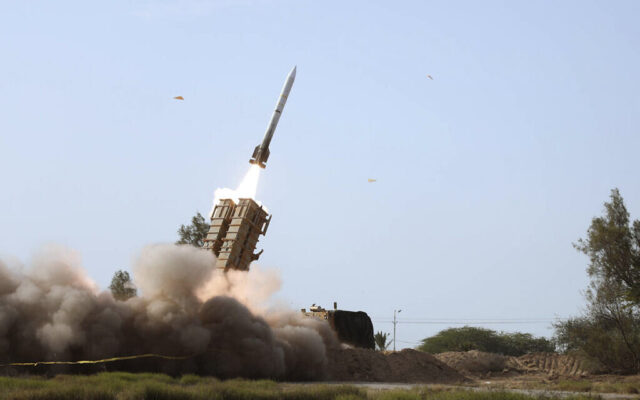The successful, but limited, Israeli strike on Iranian targets has prompted some analysts to ask if Israel’s war aims have changed — or suggest that the aims should change.
Some also say that Israel didn’t strike hard enough, or strike the right targets — denouncing the choice not to hit nuclear facilities, military sites and leaders, and economic infrastructure.
A: No, they didn’t.
B: No, they shouldn’t.
C: Hard enough for what?
D: Those are targets the US did not want hit, but which Israel also had reason not to hit.
Israel’s entry into Gaza on October 27, 2023, had three immediate aims: to uproot the military and governing power of Hamas; to secure the Gaza border and the people of Israel; and to rescue the 240 hostages taken by Hamas. Those goals have not changed, although American disapproval slowed the process considerably.
What did change is the military entry of Hezbollah and Iran directly into the war. Hezbollah began shelling Israel on October 8, 2023 — well before Israel crossed the border into Gaza — and Iran has struck Israel twice with missiles.
Israel’s war aims expanded to securing the northern border and allowing 60,000+ Israelis to return to their homes in the north — and preventing Iran from getting in the way.
Israel had ignored the long-range plans of Hamas and Hezbollah and ignored their tunnel-digging and arsenal-building. A deconfliction arrangement between Israel and Russia allowed Israel to reach Syria and eliminate various weapons manufacturing capabilities and the transport of certain weapons from Iran through Damascus to Lebanon, but a low-level war had been ongoing for years.
It was an ugly and volatile mess, but Israel appears to have done its best not to expand its areas of operation. Eventually, however, it was impossible to ignore Hezbollah in the north, thus: pagers attacks, surgical strikes on Hezbollah arsenals, leaders and headquarters; and strikes on Hezbollah banks and financial bunkers.
On the Iran front, Israel saw the rise of Iranian military manufacturing — particularly after the Biden-Harris administration lifted oil sale sanctions on Tehran, increasing the mullah government’s available cash by billions of dollars. Aside from drones and ballistic missiles, some of which have gone to Russia for use in Ukraine, the nuclear program expanded as well.
In June, the International Atomic Energy Agency (IAEA) Board of Governors voted overwhelmingly to demand that Iran take action to resolve concerns about its nuclear work. The US was hesitant, noting that pressure could make Iran escalate its nuclear activity. But later that month, Britain, France, and Germany wrote to the wrote to the UN Security Council, detailing Iran’s violations of the 2015 JCPOA.
Iran still had a chance to stay out. It didn’t.
Keeping with its own interests and an odd sense of duty to its American patron, the Israeli air force struck military targets only:
- Air Defense Systems. This will allow the Israeli Air Force to return later, if necessary. It also probably gives the Russians hives, as the destroyed systems were Russian.
- Ballistic Missile production facilities and facilities for producing solid rocket fuel. This will reduce Iran’s ability to strike and make it less necessary for Israel to rely on the US for ballistic missile defenses. Iran will have trouble restoring production.
- Systems protecting sites including oil refineries, gas fields, and a major port — while not attacking those sites themselves. This is a warning to the mullah regime that its assets remain vulnerable to future attacks.
- Taleghan 2 in Parchin, previously used for nuclear testing activities. Although Taleghan 2 was cited in much of the media as relating to Iran’s “defunct” nuclear weapons development program, at least one analyst said that “even if no equipment remained inside,” the building would have provided “intrinsic value” for future nuclear weapons-related activities.
Iran reported four military casualties and no civilian casualties. All Israeli planes and crews returned safely.
The result is that Israel improved its position regarding Iran without assuming responsibility of overthrowing the regime or eliminating its nuclear program. These things should be done, of course, but not by Israel and not while Israel is fighting on other, close-in fronts. The US and other allies should be stepping up here, but the US has already failed to stop the Iranian-backed Houthis in the Red Sea and appears uninterested in the rest.
Israel’s primary objectives remain security of its borders and its citizenry; elimination of the arsenals of Hamas and Hezbollah — thus severely constraining (or eliminating) their power to terrorize the local population and to attack Israel; and the release of the hostages, living and dead, held in Gaza in violation of International Humanitarian Law (IHL).
For the longer term, note Israel’s Prime Minister Netanyahu:
I have not given up on the Iran nuclear program; it is at the forefront of our minds. We continue to work to remove the Iranian threat. Today, Israel is seen as the most powerful country in the region.
What fateful days of a historical turn.
Iran, as well as the Israeli people, should take that seriously.


